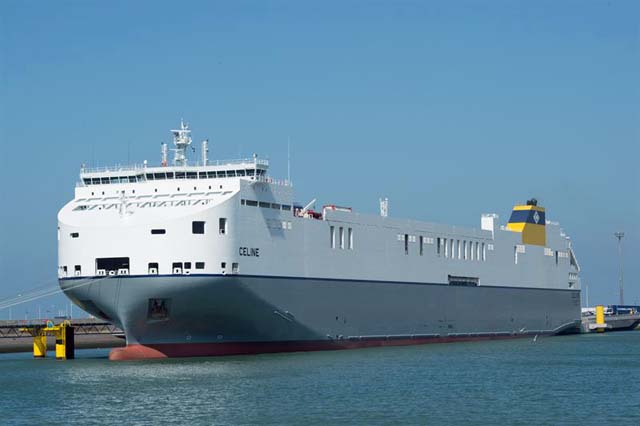Wärtsilä and logistics provider CLdN have jointly developed an innovative hybrid design for two new ro-ro vessels, using a propulsion arrangement which means that the ships can operate as gas/diesel-mechanical vessels now, or in the future in gas/diesel-electric mode.
The vessels are being built at Hyundai Mipo Dockyards in Korea. The Wärtsilä hybrid system includes Energy Storage Systems, two large PTO/PTI generators and electric motors, multidrive converters, and the Wärtsilä Energy Management System that controls and optimises the hybrid operations. The solution will enable the ships’ CO2 emissions to be minimised, thereby supporting the marine sector’s decarbonisation ambitions.
Gary Walker, COO Shipping, CLdN, said: “Our aim is to be flexible with regard to future technological developments, which is why we have worked on the development of these new vessels with Wärtsilä, a company with a proven track record in developing advanced hybrid technology for the marine industry.”
Torsten Bûssow, Director Ship Electrification Solutions, Wärtsilä, added: “Decarbonisation is a central issue for shipping today, which means that vessel designs need drastic re-thinking. It’s not always clear, however, what these changes should involve, so we at Wärtsilä have for some time now been recommending that built-in flexibility in the propulsion train should be a priority. Together with CLdN, with these vessels we are showcasing what is today both possible and meaningful.”
The two 234m long vessels will each feature 8000 lane metres of cargo space. They are part of CLdN’s fleet renewal programme aimed at drastically reducing emissions. The ships are scheduled to be delivered in Q4 2024 and Q1 2025, and will operate on CLdN’s European network.
Wärtsilä hybrid solutions for shipping are installed onboard more than 70 vessels and in excess of 100 MWh installed battery capacity. The company has a long-standing and well-established relationship with CLdN.



